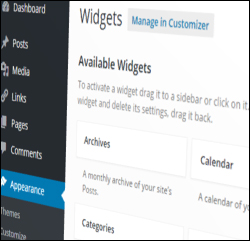 As we have discussed in this post, there are loads of benefits in choosing the WordPress web publishing application to manage and grow a website. One of these is that WordPress makes it very easy to add content, expand your website’s functionality, or reconfigure the site’s layout without code editing skills required.
As we have discussed in this post, there are loads of benefits in choosing the WordPress web publishing application to manage and grow a website. One of these is that WordPress makes it very easy to add content, expand your website’s functionality, or reconfigure the site’s layout without code editing skills required.
WordPress gives you the ability to quickly and easily add, remove, and rearrange content on your blog’s sidebar (or header and footer sections, depending on what theme you are using) using widgets.
Once you know how to use widgets, you can easily add things to your site’s sidebar area (plus headers and footers and other areas, depending on the theme) like:
- nested list of your web pages
- blog post categories
- archives
- menus
- links to external sites
- your most popular posts
- recent comments
- advertisements
- testimonials
- surveys & polls
- RSS feed items
- customers login section
- video
- twitter feeds
- add widgets from external sites (e.g. StumbleUpon)
- administrative forms (e.g. login, register, etc.)
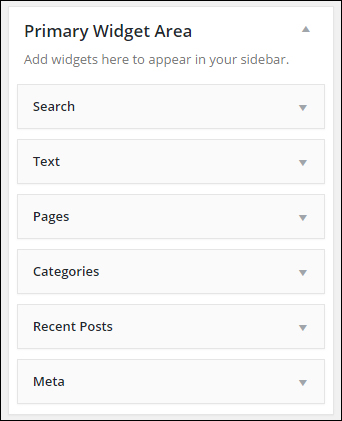
(WP widgets make managing and using WordPress easy)
To learn more about what WordPress widgets are, how they work and why they make managing your site easier, go here:
In this tutorial you will learn how to use and configure a number of commonly-used widgets in WordPress.
Using WordPress Widgets
The Basics
Before we start learning how to configure widgets, let’s first go over some of the basic concepts of how to use widgets:
Most WordPress Themes Support Widget-Ready Layouts
Many WordPress themes support widgets and provide built-in widget-ready areas in your theme’s layout where widgets can appear, such as the sidebar, header area, and footer sections. Depending on your theme, widgets can sometimes also get added inside the content area …
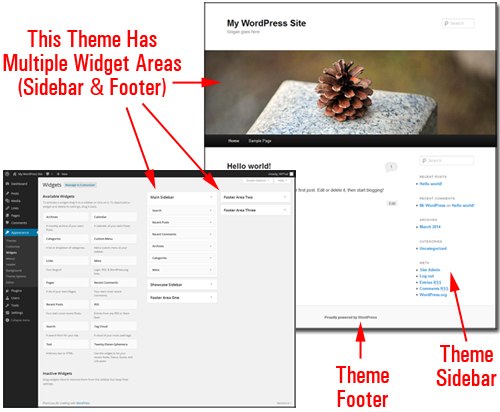
(Many themes provide a number of widgetized sections)
These widget-ready areas correspond to a feature inside the Widget administration screen called “Widget Areas” …
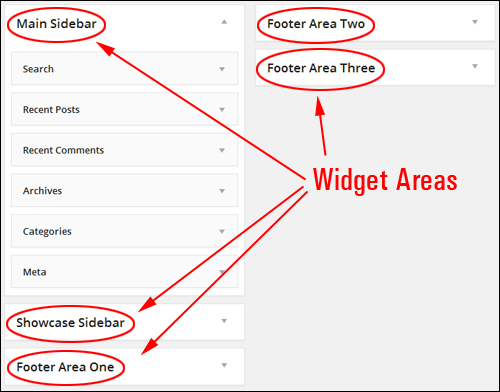
(Widget Areas)
Your Widgets Panel
The Widgets panel displays a list of all the widgets that you currently have available.
The right-hand section of the window displays your “active” widgets …
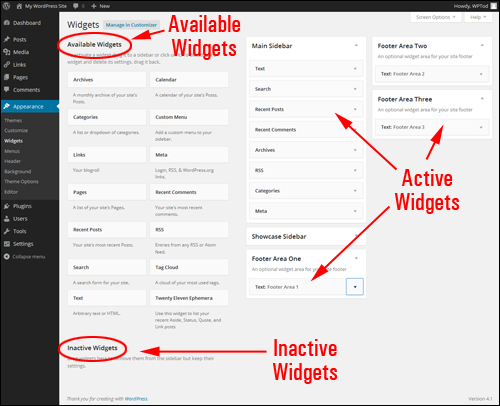
(Activate or deactivate widgets with drag & drop ease)
Available widgets can be made Active or Inactive by dragging-and-dropping items to different sections of the widgets panel.
Widgets dragged from the Available Widgets section to widget areas like the sidebar, footer, etc. become active and can be used to perform their function on your site.
In addition, the Widgets panel includes an Inactive Widgets section that lets you remove any widgets that you no longer want to actively display on your website. Inactive widgets do not lose their pre-configured settings.
Reorganize Widgets With Drag & Drop
You can easily add, activate, deactivate, rearrange and remove things using widgets just by dragging and dropping items from the Widgets area …
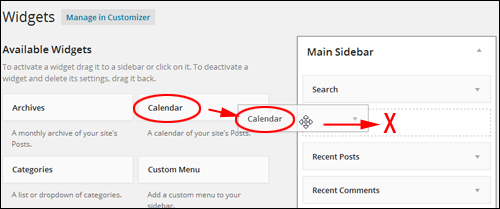
(Rearrange widgets on your WordPress site using drag-and-drop)
You can also easily rearrange your theme’s layout using drag and drop.
For example, take a look at the image below. In this site, the widgets have already been configured to display the following to visitors:
- A subscription form,
- A contact support button, and
- A ‘click to call’ section from a widgetized WP plugin (i.e. a WordPress plugin with an accompanying widget) …
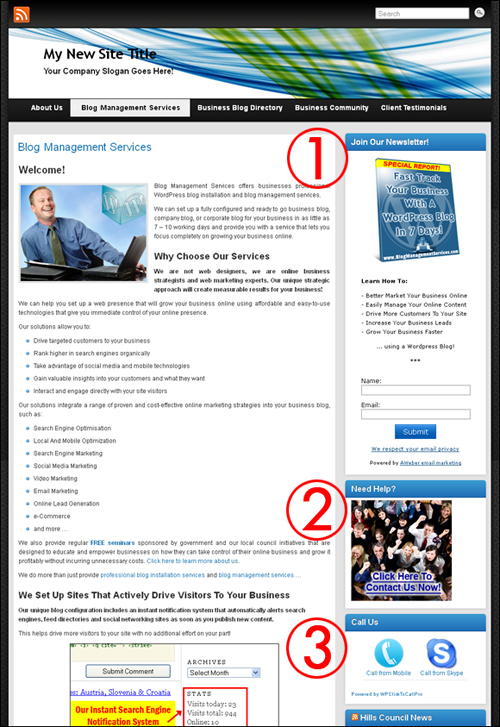
(Widgets control the order certain features on your site display)
If we look inside this site’s Widget area, you will see that these features display on the site in the same order as their corresponding widgets are arranged in the active widget section …
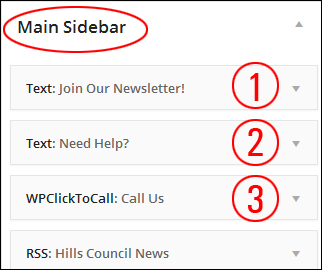
If we reorganize the above widgets in the Main Sidebar Widget Area by dragging and dropping items …
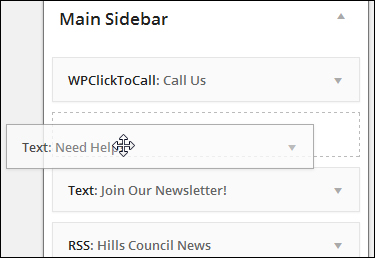
(Drag-and-drop to rearrange widgets in your widget area)
The widget features have now been reorganized in your sidebar …
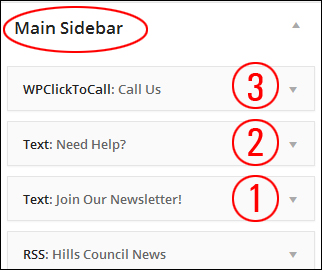
As you can see, this immediately reorganizes the order of items in your sidebar.
Reorganizing sidebar elements with widgets can improve your site’s user experience.
Note in the screenshot below that the ‘click to call’ feature (3) is now the first item on the sidebar menu, and the ‘contact us’ graphic button (2) can now be found above the newsletter opt-in form (1) …
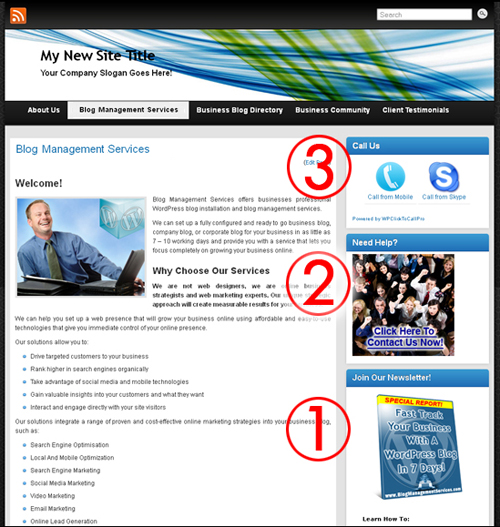
(Reorganize sidebar layout with widgets to improve visitor experience)
Removing Widgets From The Sidebar
Deleting widgets from the sidebar is really easy.
For example, let’s remove the Search widget from the sidebar navigation area …
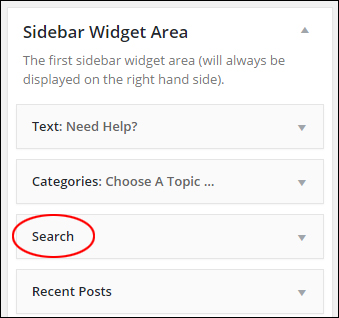
(WordPress Search widget)
To remove an active widget, you can either open up the widget settings and click the Delete link …
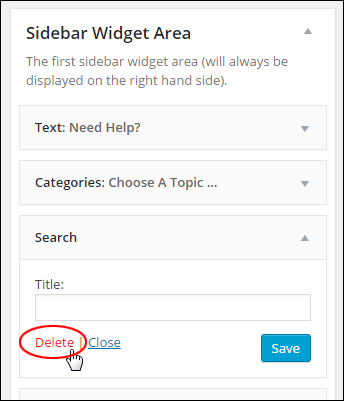
(Deleting widgets)
Or just drag the widget out of the Active Widgets area and into the Inactive Widgets section …
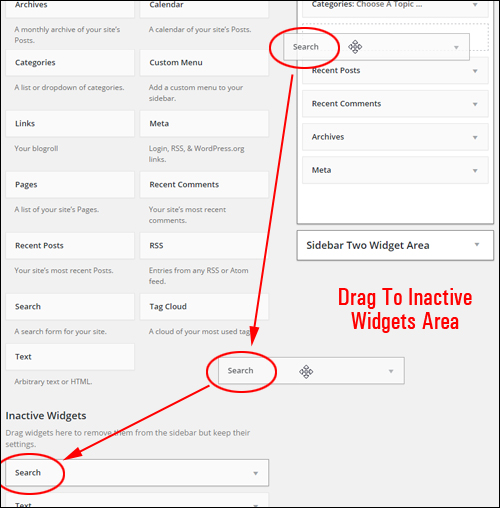
(How to remove your widget)
Repeat this process for any widgets you want removed from your sidebar. You can always restore widgets by dragging them back into the active widgets area.
Widget Settings
Many widgets can be customized. This includes hiding information from users, displaying additional forms, fields, or data, specifying dimensions of sidebar images, videos, etc.
Clicking on the little triangle in the corner of a widget expands the item and displays the settings for that widget …

(Toggling expands/collapse widget settings)
When the widget expands, you can change and save your settings, remove the widget from the “Active Widgets” section, close the widget, or click on the triangle to collapse the widget settings …
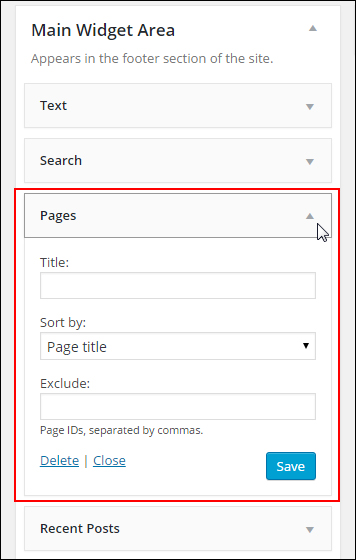
(Widget settings)
![]()
Some widgets may require or offer no customization, or they may only allow you to add an optional title …
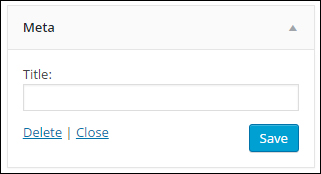
(Some widgets offer little to no configuration options)
Widget Customizer Section
Depending upon which WP theme you have installed, you’re also able to manage widgets without making actual changes to your site. This way, you can be sure that you like your customizations before committing anything to your website or blog.
The ability to manage widgets from within your WordPress dashboard is a valuable feature of WordPress. You can work in preview mode inside the WordPress Theme Customizer screen (Appearance > Customize) and see how your widget content will appear prior to publishing any changes you’ve made (to avoid making mistakes), or change your widgets on the fly using the Widget editor area.
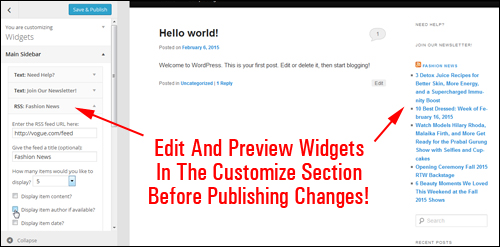
(preview widget changes in the Customize feature)
If you need to make changes to your site while viewing the frontend, just click on the Customize link …
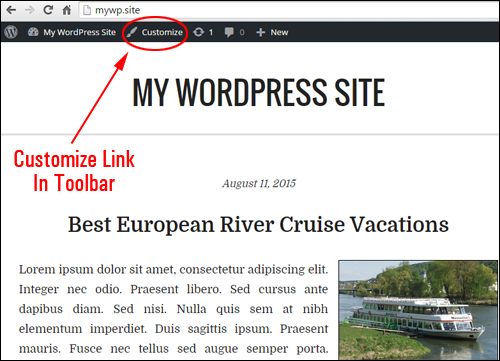
(Customize your site quickly)
This will bring you to the Customizer section in the backend.
You can do plenty of things to your widgets in preview mode (like inserting, deleting and reorganizing your widgets), and this will all be done in real time. If you like what you’ve done, click the “Save and Publish” button and the changes will be instantly applied and reflected on the site’s frontend.
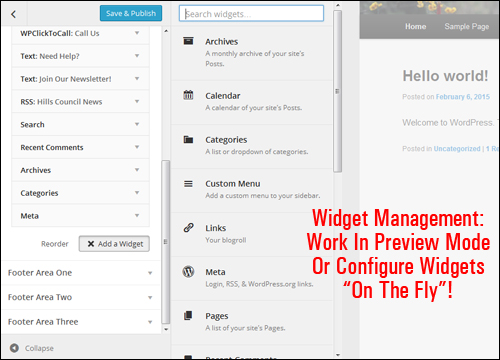
(Widget management – work in preview mode)
As soon as your changes have been saved, all changes made to widgets will be automatically updated.
![]()
Because WordPress Themes can display elements differently on your site, we recommend that you install your theme first before configuring widgets.
Also, remember to use the Customizer feature to preview all changes. This saves you from having to keep two browsers open while you complete this tutorial.
Now that you know the basics of using widgets, the next step is to configure various frequently-used WordPress sidebar widgets.
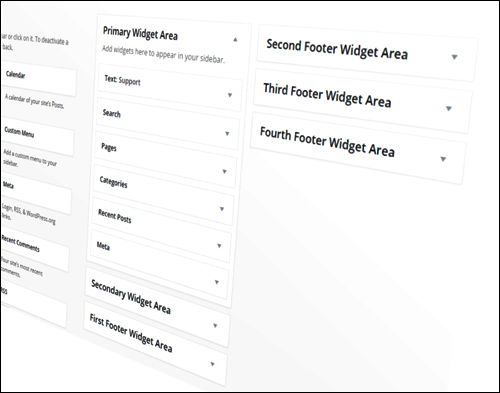
***
This is the end of part 1 of this tutorial about how to use Widgets.
Click on this link to continue:
***
"This is an awesome training series. I have a pretty good understanding of WordPress already, but this is helping me to move somewhere from intermediate to advanced user!" - Kim Lednum
***